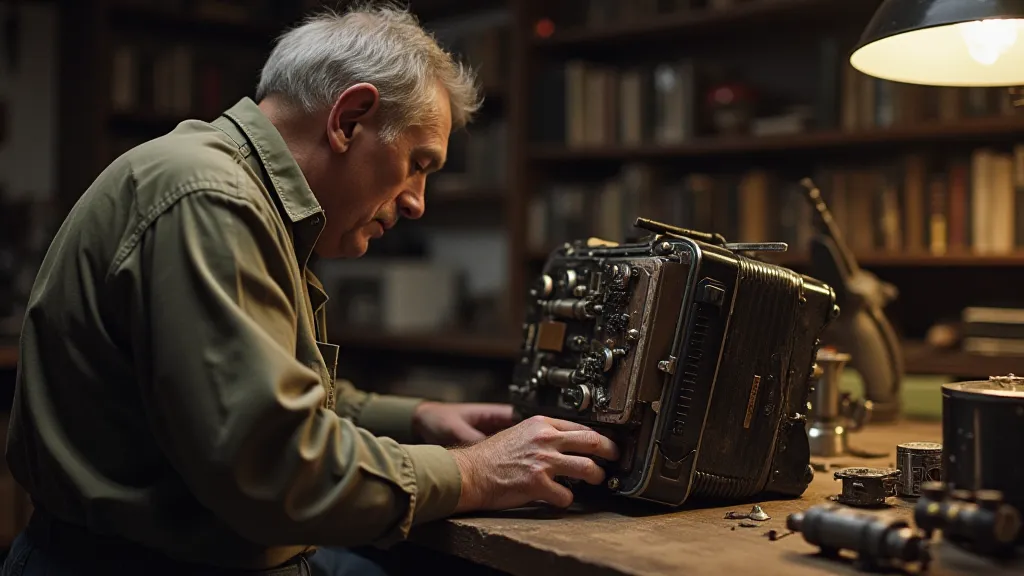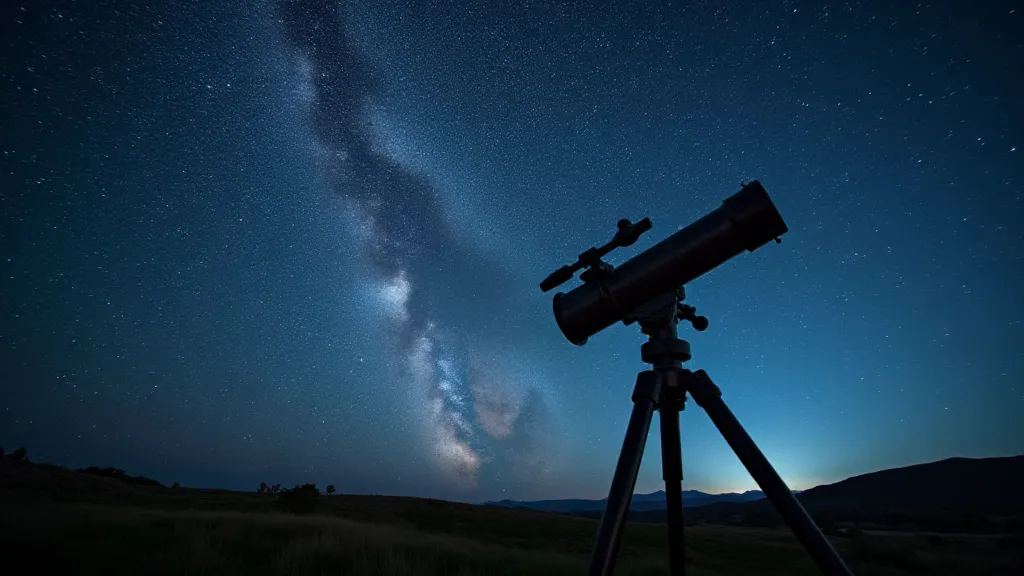Aperture's Embrace: The Power of Gathering Light
There’s a certain romance to old things, a palpable sense of history held within their form. Think of an antique accordion, its bellows worn smooth by countless hands, its keys whispering melodies of forgotten dances. It’s not just an instrument; it’s a vessel for stories, a tangible link to a past brimming with life and emotion. That same feeling – a resonance with time, a reverence for craftsmanship – often washes over me when I consider the heart of a telescope: its aperture.
For the uninitiated, "aperture" refers to the diameter of a telescope’s objective lens or mirror. It's the number that dictates what you can *see*, and understanding its importance is absolutely fundamental to any journey into amateur astronomy. It’s easy to get lost in fancy features and complex technology, but ultimately, aperture is the king. It's the single most critical factor impacting a telescope's light-gathering ability and resolving power.

The Light-Gathering Advantage
Light is everything in astronomy. The faintest galaxies, the most distant nebulae, the subtle details of planetary surfaces – all exist as faint flickers of light. The more light your telescope can collect, the more you can see. And that's where aperture’s power comes into play. A telescope's light-gathering ability increases with the *square* of its aperture. This isn’t just a small difference; it’s a monumental leap.
Imagine two telescopes: one with a 60mm aperture and another with an 80mm aperture. The 80mm telescope gathers (80/60)^2 = 2.67 times more light than the 60mm telescope. That extra light isn’t just about seeing *brighter*; it's about revealing details that would otherwise be lost in the darkness. With a brighter image, your eye can perceive subtle nuances, faint structures, and details you might have missed entirely.
Consider the Pleiades star cluster, also known as the Seven Sisters. In a small telescope with limited aperture, you might see a hazy patch of stars. But with a telescope boasting a larger aperture, those same stars burst forth with individual brilliance, revealing the cluster's intricate beauty and dynamic structure. It'd be akin to witnessing the careful restoration of an antique instrument – each detail brought to life, a testament to its enduring quality. Maintaining your equipment is also key to experiencing this level of detail, and a good start is with telescope maintenance.
Beyond brightness, aperture also dictates a telescope’s resolving power—its ability to distinguish between two closely spaced objects. Again, the relationship isn’t linear. Resolving power improves proportionally to the aperture. A larger aperture allows you to see finer details on the Moon, sharper rings on Saturn, and more distinct cloud bands on Jupiter.
Think about the craftsmanship of an antique accordion. A master craftsman, painstakingly shaping each key, carefully aligning each reed, ensuring every component worked in perfect harmony. The level of detail is astonishing. A small telescope might show you a blurry impression of a distant nebula, while a larger telescope unveils a swirling vortex of gas and dust, revealing a complexity that rivals the intricate workings of that antique instrument.
The limiting factor for resolving power is diffraction. Light waves bend around objects, and this bending creates a fuzzy halo around bright objects. The larger the aperture, the smaller the diffraction halos, and the sharper the image. This is why telescopes with larger apertures are prized for their ability to reveal the true detail of celestial objects. The effects of atmospheric turbulence can further complicate the image, but advancements like adaptive optics are continually striving to overcome these limitations.
Different telescope designs—refractors, reflectors, and catadioptrics—present unique aperture considerations. Refractors, using lenses, historically faced challenges in producing large, flawless lenses. This limited their aperture sizes compared to reflectors, which use mirrors. Modern advancements in glass manufacturing have improved this, but cost remains a factor.
Newtonian reflectors, a popular type of reflector, are relatively easy to manufacture and offer excellent light-gathering ability for their size and cost. Schmidt-Cassegrain telescopes (SCTs) and Maksutov-Cassegrains (Mak telescopes) are compact, offering a long focal length in a small package, but they can be more expensive per inch of aperture. Each has its strengths and weaknesses, and the optimal choice depends on budget, portability requirements, and observing goals.

My own journey into astronomy began with a small, 60mm refractor. It was a simple instrument, but it opened my eyes to the wonders of the universe. I remember vividly my first glimpse of Saturn’s rings – a moment that forever captivated my imagination. As I upgraded to larger telescopes, the differences were staggering. The images became richer, the details more profound, the experience more emotionally resonant. It was similar to the joy of studying lunar cartography – revealing the Moon's hidden landscapes and the stories etched into its surface.
It’s a feeling that parallels the experience of encountering a meticulously restored antique accordion. It's not just about the sound it produces; it's about appreciating the skill and dedication that went into its creation, the history it embodies, and the joy it brings. Astronomy, like collecting and restoring antiques, is about connection—connecting with the universe, with history, and with something larger than ourselves.
The care taken in crafting an antique accordion often mirrors the precision required in telescope manufacturing. The quality of the bellows, the alignment of the reeds, the careful selection of materials—all contribute to the instrument’s longevity and beauty. Similarly, in astronomy, the quality of the optics, the rigidity of the mount, and the overall craftsmanship all impact observing performance. Even the choice of a specific telescope type, like a Schmidt-Cassegrain, represents a conscious compromise between aperture and portability, a trade-off mirroring the decisions made by instrument makers throughout history.
Collecting antique accordions (or telescopes!) isn't solely about acquisition; it’s about understanding the evolution of an art form, appreciating the ingenuity of past generations, and preserving a piece of history. It’s about recognizing the human element—the passion, the dedication, the artistry—that went into creating something truly special. And in the quiet darkness of a clear night, under a canopy of stars, the power of aperture truly shines, revealing a universe of wonder and inspiring a sense of awe that transcends words.

Beyond the simple joy of observation, understanding the nuances of telescope design and performance – recognizing the strengths and weaknesses of reflectors, refractors, and catadioptric systems – enhances the overall experience. The engineering behind instruments like the Schmidt-Cassegrain, for example, represents a remarkable achievement in optical design, allowing astronomers to capture vast amounts of light within a relatively compact package. Further expanding on this complexity, and the technical design involved in optics, can truly show how the best telescopes, like the best accordions, are testaments to human ingenuity.





